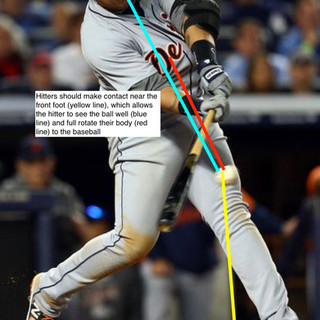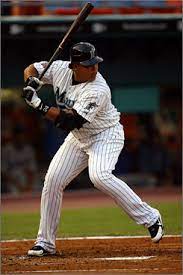Hitting 101
- CoachTad

- Jun 26, 2020
- 3 min read
Updated: Sep 6, 2023
Main Objective: Solid Contact
Hitting starts and ends with making solid contact. Bat speed, strength, and other things that lead to power are useless if the hitter cannot square up the ball on the sweet spot of the bat.
You will also find that, as players grow up, understanding how to make good contact guides them to better mechanics and better approaches to hitting. Players are swinging aimlessly if they do not understand proper contact.
Creating a Head-On Collision
The goal of a good swing is to create head-on contact with the ball. Glancing blows are less impactful than direct contact. Use these pictures of pro hitters making contact to demonstrate the proper contact position.
Note that while each swing is unique, there are a few key fundamentals that are consistent across each of the pictures. Embrace the fact that every player will have their own style. Focus on teaching a few key fundamentals that are common among the most successful hitters.
Fundamentals of a Making Good Contact
Balance
Balance is the name of the game for good contact. Balanced hitters are relaxed and focused while off-balance hitters are less free to see the ball and move properly. Notice how each of the pro hitters creates a “balance triangle” by keeping their head centered between their feet.
***Notice that each hitter is leaning back to some degree. Leaning back creates lift and helps hitters match their swing to the path of the pitch. This is different than an “uppercut” where the hitter is pulling the bat upward through the strike zone.
Rotation
Rotation = bat speed. Hitters must use their hips and shoulders to rotate their bodies and accelerate the bat. Swinging with the arms is less powerful and usually creates a bad bat path.
Contact Point
With a good swing and timing, most hitters make the best contact when the ball is approximately even with their front foot. Avoid reaching for the ball or hitting it too deep in the swing.
Power “Z”
Balance and timing are important prerequisites for solid contact, but body position at contact is the thing that transfers power into the baseball. The pro-hitters in our pictures create a distinctive “Z” shape at the moment of impact. The “Z” indicates three pieces of solid swing:
- Solid back leg position driving energy into the hitting area
- Balance and posture connecting the legs and arms together
- Proper back-arm is bent and elbow is “connected” to the body
***Note that the hitter’s head is always even with or behind the line created by their back leg and hip. Leaning forward leads to weak contact.
Teaching Note
For tee ball and other beginners, don’t worry about teaching a batting stance at this point. Tell players to “get ready to swing hard” and see what they come up with on their own while reminding them about the goal - solid contact.
Phases of a Good Swing
Load
Weight shifts into back leg and torso coils into back hip
Stride & Stretch
Stride towards the pitcher, landing softly, while the hands work up and back in the opposite direction to create separation from the chest. As the foot gets down and the hands go up, the hitter is creating their "Launch Position".
Launch & Rotate
As the front foot lands, the hips launch into rotation, and the shoulders follow and bring the bat into the zone. As rotation begins, the hitter's back elbow must tuck against the back hip, which keeps the bat in tight against the body until the hitter decides to extend their arms.
Extend
Once the shoulders rotate and the chest is facing the ball, the arms extend to throw the barrel to and through the ball. Arms must not extend before rotation! Early arm extension drops the barrel and slows the bat down.




































Comments